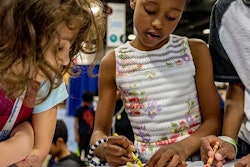WASHINGTON — Reforming the No Child Left Behind Act to promote higher accountability standards for the nation’s high schools, inclusive and equitable testing and culture-based curricula may help stem the wave of minority high school student dropouts and shrink the achievement gap, a panel of educators and activists said at a LULAC meeting here this week.
Every year, approximately 1.2 million students drop out of high school. The dropout rate for Hispanic students is more than 40 percent, and for Blacks it hovers at 50 percent. Underrepresented minorities, in general, have less than a 58 percent chance of graduating high school with a regular diploma. This inequality can be reversed by reforming No Child Left Behind (NCLB), education advocates say.
Policymakers, educators, civil rights leaders and activists convened this week for a town hall-styled meeting hosted by the League of United Latin Citizens (LULAC) to address NCLB policies that shortchange minority students and fail to hold high schools accountable for poor graduation rates. LULAC, a founding member of the Campaign for High School Equity, a diverse coalition of civil rights organizations committed education equality, is pressing for visible reform in the reauthorization of the No Child Left Behind Act slated to pass sometime next year.
Currently NCLB neither ensures that graduation rates are calculated consistently or accurately nor requires the data collected to be disaggregated by race.
Panelist Holly Kuzmich, deputy chief of staff for policy and programs at the Department of Education, insisted that standardized test scores in mathematics and reading have risen since the passage of NCLB in 2002, particularly among minority and special education children, but admitted the program is flawed.
“In 2002, focus on accountability was really put on elementary schools. High schools are our new focus, [especially] better reporting of graduation rates and dropout rates. There is no uniform definition of dropouts. States get to define that for themselves,” said Kuzmich. “We have proposed a set of regulations to get all states reporting on the same scale by 2013.”
Nearly 5.5 million English Language Learner students are enrolled in America’s public school system. According to LULAC officials, this student population is being left behind. ELL students — 80 percent of whom are Hispanic — are among the country’s lowest-performing students. In 2007, only 4 percent of eighth-grade students scored above “proficient” in reading for the National Assessment of Educational Progress, compared with 31 percent of ELL students. In addition, only 49 percent of ELL students graduate from high school on time.
Peter Zamora, the Mexican American Legal Defense and Educational Fund’s Washington, D.C., regional counsel, favors testing in native language to level the playing field. Zamora, a credentialed bilingual educator, says that in teaching 12th-grade English at a California high school he learned that, “most English-language learners are not going to be able to perform well on an English assessment test.”
LULAC is also petitioning for implementing culture-based curricula, an educational approach which is not supported by NCLB. Data from the Nation Indian Education Association reveal that learning in an environment that incorporates native language, culture and traditions increases students’ mastery of math and science. Federal education policy that promotes culturally based teaching is critical in shrinking the achievement gap, advocates say.
“School climate is tied to academic achievement,” said Dr. Joel Gomez, associate professor of educational leadership at The George Washington University. “Research shows that when kids feel good about going to school they do better.”
Click here to post and read comments
© Copyright 2005 by DiverseEducation.com


















